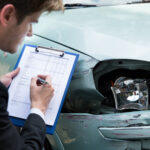
When it comes to auto insurance coverage, almost every state has mandatory liability minimums that vehicle owners must carry. California’s minimums were established way back in 1967 and haven’t been updated since—until now.
Governor Gavin Newsom just signed the Protect California Drivers Act (SB 1107, Dodd) to establish new liability minimums for motorists across the state. The prior coverage limits included $15,000 per person for injury or death, $30,000 per accident, and $5,000 for property damage.
Under the new law, which will go into effect in 2025, auto insurance carriers will be required to provide mandatory minimums of $30,000 per person, $60,000 per accident, and $15,000 for property damage. Ten years later, the limits will increase again to $50,000, $100,000, and $25,000, respectively.
The passing of the Protect California Drivers Act is good news for accident victims across the state. The new mandatory limits mean more compensation will be available for injured parties to recover following a wreck.
It’s also worth noting that this liability coverage won’t just apply to other motorists and passengers. Pedestrians and cyclists who end up getting hurt through no fault of their own should be able to seek more funds, as well, assuming the liable party has increased their limits to meet the new mandatory minimums.
How Do You Put Together a Strong Third-Party Claim?
If you were hit by a drunk, drowsy, or distracted driver and you want to seek compensation from their auto insurer under their liability converge, you’re going to have to build a compelling third-party claim. This starts by gathering evidence, which will probably include at least some of the following:
- Photographs of the wreckage,
- Statements from eyewitnesses,
- Dash camera footage,
- The official police report,
- Cell phone records,
- Toxicology reports,
- Black box data, and
- Testimony from accident reconstructionists.
Of course, proving fault is only half the battle when it comes to securing compensation. You’re also going to have to convince the insurance adjuster that you incurred legitimate and recoverable losses as a result of the accident. Evidence for doing so might include hospital bills, health insurance statements, paystubs, prior tax returns, and receipts and invoices for reasonably necessary replacement services.
Call (562) 206-1939 to Discuss Your Case with a Long Beach Car Accident Attorney
Your Injuries Are Personal to Me
If you were hurt in a collision through no fault of your own, turn to the Law Office of Michael D. Waks for help pursuing every possible avenue of compensation. We won’t charge any fees whatsoever unless we win your case. Call (562) 206-1939 or submit our Contact Form to schedule a free initial consultation with a car accident lawyer in Long Beach.
Download Our Car Crash Emergency Response .PDF
Should you find yourself in another wreck, it’s important to record the scene. By referring to our handy checklist, you can ensure you document everything you’ll need to put together a compelling claim against the at-fault party. Download our Car Crash Emergency Response .pdf for free today.
- Legal Rights for Injured Passengers in Shared Rides Across So Cal - December 10, 2025
- Parking Lot Accidents And Your Legal Options In Long Beach - December 3, 2025
- How Law Changes Affect Injury Cases in California - November 26, 2025